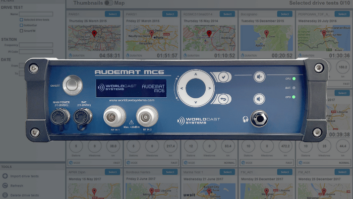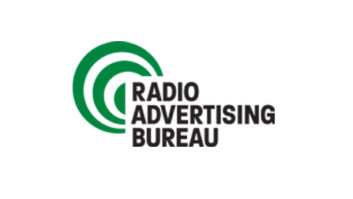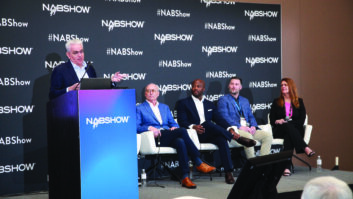Web 2.0
Sep 1, 2008 12:00 PM, By Joe Dysart

Technologists busily re-inventing the Web say radio stations can look forward to an Internet where it’s much easier to collaborate, innovate, and manipulate data and software on a wide variety of Net-friendly devices.
Driving this change � a trend loosely referred to as Web 2.0 � will be the rapid and widespread adoption of social networks by radio stations and other businesses. Employees will seize on to these networks to collaborate internally, and listeners will use them as an active part in forging direction on all aspects of a station’s identity.
Indeed, technology market research firm Forrester predicts that business investment in social networks designed for customer and client input alone will reach nearly $1 billion annually by 2013, as corporations capitalize on a trend first popularized by companies like MySpace and Facebook. Entry level social networks, in the form of radio station blogs and simple discussion forums that invite and publish comment from visitors, are already popping up on the Web. The Bob Edwards Show heard on Satellite XM’s XMPR, for example, has its own community discussion board, as does NPR-affiliate 89.7 FM, WKSU, (www.folkalley.com/community/forum) and 90.1 FM, WMPR (www.wmpr901.com/messave_board.php).
In addition, more full-blown social networks � miniature replicas of MySpace and Facebook � are expected to become increasingly common. Clear Channel Radio, for example, launched its online community portal www.erockster.com this past spring. The social network features a discussion board, blogs, member-uploaded photos and videos, as well as on-air, online and on-demand music that targets 13-34 year-olds. Members also get to influence erockster.com‘s content by inputting their preferences on the site.

The Bob Edwards show reaches out to Web users with its own discussion board.
�Our main focus will be on quality and we’re going to give a lot of bands that don’t have a chance to be heard on the radio that opportunity,� says Eric Szmanda, erockster.com‘s chief producer. Initially, radio stations will be able to source software for building these social networks from small and nimble boutique providers like Neighborhood America and Leverage Software, which offer tool suites that bundle together the most popular facets of social networking, such as profile creation, blogs, discussion forums and content uploading and sharing, according to Forrester.
But by 2013, expect the biggest guns in the software industry, including SAP, IBM and Microsoft, to fully incorporate Web 2.0 tools in their product lines, says G. Oliver Young, author of the April 2008 Forrester report, �Global Enterprise Web 2.0 Market Forecast: 2007 To 2013.�
�SAP, IBM, Microsoft and others are already beginning to give away Web 2.0 functionality for free to drive use of their core applications and value engines,� Young says. �Microsoft’s SharePoint has a lightweight wiki (a network-based collaboration tool), while IBM is now offering social networking mashup technology through its Lotus Connections and Lotus mashups products, respectively.� (Mashups are tools that enable users to combine data from previously disparate databases, which often reside in different software applications.)
Meanwhile, equally influential in the re-invented Web will be a new approach to computing where most � if not all � of a company’s software applications will reside on the universally accessible Web, rather than locked away on mainframes or on individual PCs � a concept known as cloud computing.
Emblematic of this trend is Microsoft’s new Live Mesh, software, which is being designed to link together all of a company’s Internet devices � including desktops, laptops, Mac computers, cameras, mobile phones, media centers and digital picture frames � for instant collaboration.
Web 2.0
Sep 1, 2008 12:00 PM, By Joe Dysart

A new social network from Clear Channel, erockster.com borrows a page from MySpace and Facebook.
Essentially, the software will enable a radio station to synchronize all data and applications across all devices as much as possible, enabling all of those devices to become aware of each other as long as each is linked to the Internet via a wire, or via Wi-fi, according to Amit Mital, Microsoft’s general manager, Live Mesh.
A radio station using a full-blown version of Live Mesh, for example, would be able shoot an interview on-air with a hot star, automatically video stream that on the station’s website and to listeners’ cell phones, while simultaneously having the video crop on-screen at a presentation the station is giving at an industry trade show.
Currently, Live Mesh only links Windows-based PCs connected to the Web via wire or Wi-fi, although plans are in development to enable firms to link mobile phones and Mac computers within the same Mesh, Mital says.
Of course, in its ideal form, cloud computing will not be driven by a just one major company like Microsoft, or favor the linking of devices that run on one type of software, according to Tim O’Reilly, CEO of O’Reilly Media, a computer book publishing firm that also hosts conferences on Web 2.0 (www.web2expo.com).

Folk fanatics regularly drop into the “Folk Alley” discussion board, affiliated with NPR-affiliate WKSU.
Instead, the purest implementation of cloud computing will enable any computerized device a company uses to simultaneously interconnect with every other computerized device in a company’s technology arsenal, O’Reilly says.
That ethic � a business-world based on the premise that all software should be able to easily run on all computerized devices, regardless of what company creates that device or software � is another major component of the re-invented Web, often referred to as open source computing.
Most technologists point to the Linux operating system � an alternative to Microsoft Windows that is free, owned by no company in particular, and is specifically designed to encourage innovation by anyone and everyone who is interested in enhancing the system � as a key example of that ethic in action.
But more recently, extremely influential technology companies like Yahoo! have decided to embrace the ethic as a core business philosophy. In fact, Ari Balogh, Yahoo!’s chief technology officer, says the company is literally in the process of re-wiring itself from inside out to ensure that independent software developers will easily be able to develop new applications for the Yahoo! community � and instantly post those applications to Yahoo!
In practice, Balogh says this added openness will result, in part, in an ever-increasing number of data mashup tools, which will enable Yahoo! users to combine data available on Yahoo! in new ways for highly specific research needs.
An individual radio station embracing this same ethic, for example, could enable an enthusiastic listener to post a mashup tool on the station website that could be used to automatically find and post links to blogs authored by other listeners who absolutely love certain on-air personalities � or anything else about the station.

WMPR’s message board has hundreds of discussion threads.
Finally, another cornerstone of the re-invented Web will be the increasing proliferation of computerized sensors programmed to continually update the Web with time-sensitive data, according to O’Reilly. Essentially, these sensors will eliminate the drudgery of inputting such data by hand.
O’Reilly points to vehicle traffic analysis systems like Dash Navigation and Microsoft’s still-in-development Clear Flow as pioneers of this trend. Both software solutions rely on GPS devices embedded in a large number vehicles to automatically relay data to Web-based software, which is used to analyze traffic patterns and suggest alternative to routes for drivers.
As the future Web rolls out, we will all be asked to contribute our sensors, to help drive a wide array of analysis software tools residing on the Web, O’Reilly says.
Unfortunately, there is a dark side to all this frothy innovation. As more and more data and software applications migrate to the Web, there is a real threat that ultimate control of most of those applications and data may become centralized in the hands of a few, large technology companies, O’Reilly warns. “We need to watch that,” he says.
Fortunately, those who believe that everything new is not necessarily better can take solace in the prediction that the revolutionary tool that made the Web possible, the Web browser, will most likely be around for a long time to come � despite the fact that competitors like the Iphone are beginning to crop up.
The reason? Despite the fact that the Web browser is “so nineties,” the tool is such a ubiquitously entrenched part of the Web experience for users across the globe, it makes no sense to re-invent the wheel. �There’s really no incentive,� says Mark Andreessen, founder of Netscape, the browser that played a pivotal role in the emergence of the Web.
Joe Dysart is an Internet speaker and business consultant based in Manhattan.






